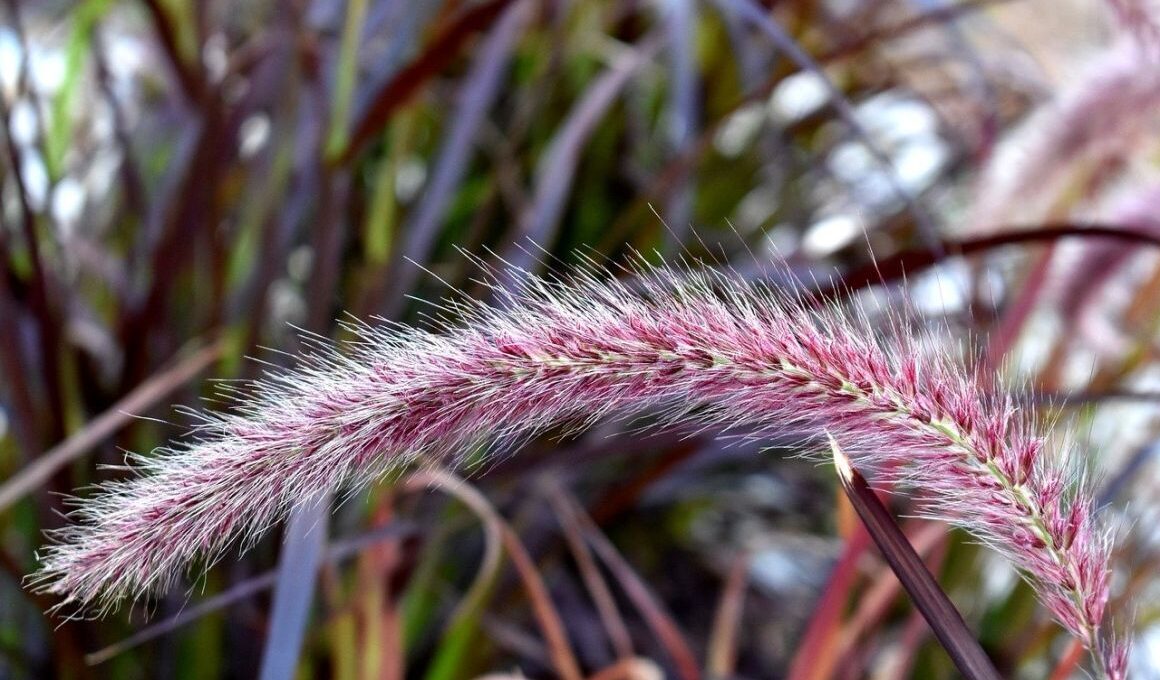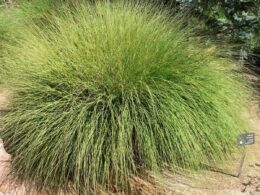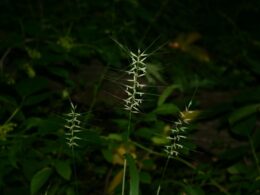What Is Purple Fountain Grass?
Purple fountain grass (Pennisetum setaceum rubrum) is an ornamental grass that is native to Africa. It gets its name from its distinctive purple-colored leaves, which grow in a rosette shape. The plant also has long, slender flowering stalks. In cooler climates, it can be grown as an annual plant.
Purple Fountain Grass Appearance
Purple fountain grass is an ornamental grass that is often used in landscaping. It is a perennial plant that can grow up to five feet tall and four feet wide. The blades of the grass are narrow and linear, and they grow in an upright, V-shaped clump. The flowers of the purple fountain grass are small and inconspicuous, but they are borne on long, purplish-pink inflorescence that adds to the plant’s ornamental value.
Pennisetum Setaceum: Habitat and Distribution
Purple fountain grass is a perennial plant that grows in USDA hardiness zones 9-10. It is a popular ornamental grass that is native to Africa and the Middle East. In its native habitat, it grows in warm climate, in open woodlands, savannas, and along riverbanks. It has also been introduced to many other parts of the world, including North America, where it is often used as a landscape plant.
How to Care for Purple Fountain Grass?
Purple fountain grass is a beautiful and easy-to-care-for ornamental grass. It thrives in full sun or partial shade and well-drained, moist soil. Once established, it is quite drought tolerant. To keep your purple fountain grass looking its best, cut it back to about six inches above ground level in early spring. This will encourage fresh new growth throughout the season. During the summer months, you can deadhead the flowers to promote continued blooming.
Watering
Although purple fountain grass is drought-tolerant once established, it grows best when it receives regular watering. During the warmer months, the grass should be watered deeply once a week, allowing the water to penetrate to a depth of at least 6 inches. In cooler weather, watering can be reduced to once every two weeks. Purple fountain grass is a relatively low-maintenance plant, but regular watering will help to ensure that it remains healthy and vigorous.
Fertilizing
While this plant is relatively low-maintenance, it does require occasional fertilization to keep it looking its best. The best time to fertilize purple fountain grass is in the summer, just as new growth begins to emerge. A slow-release fertilizer should be used, and the amount will vary depending on the size of the plant.
Pests and Diseases
Caterpillars, earwigs, and aphids can all cause problems for purple fountain grass. These pests can damage the leaves, preventing the plant from getting the sunlight it needs to photosynthesize. Purple fountain grass is susceptible to a few different diseases, including rust, powdery mildew, and leaf spot. These diseases can weaken the plant and make it more susceptible to pests and other problems. If you notice any of these diseases on your purple fountain grass, be sure to treat them right away to prevent further damage.
How to Plant Purple Fountain Grass?
Purple fountain grass can be propagated by seed, but it is more commonly grown from transplants. When planting purple fountain grass, it is important to choose a sunny location with well-drained soil. The plants should be spaced 3 to 5 feet apart, and the soil should be kept moist until the plants are established. Once established, purple fountain grass is relatively drought tolerant. With proper care, it will grow 2-4 feet tall and 1-2 feet wide.
Soil
There is no definitive answer to this question, as different gardeners have different preferences for the type of soil they use for their plants. However, some general tips on choosing the best soil for purple fountain grass include making sure that the soil is well-drained. The best type of soil for purple fountain grass is loamy soil, which is a mix of sand, clay, and silt.
When to Plant Purple Fountain Grass?
The best time to plant purple fountain grass is in the spring. Spring planting should be done after the last frost date in your area. When planting, be sure to choose a location that receives full sun and has well-drained soil.



















